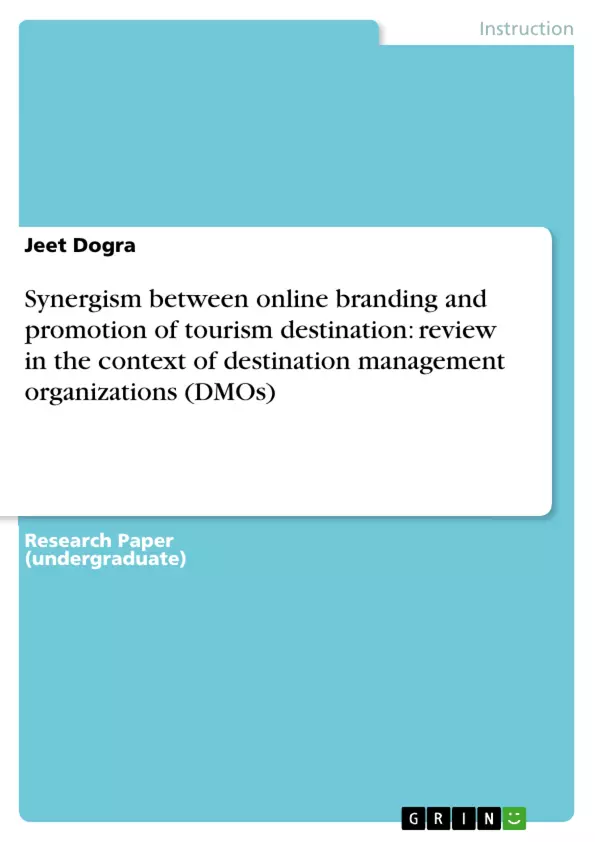The present study is based on exploring the link between online branding and tourism destination’s promotion. From the last two decades, the online media(s) and internet tools contributing enormously in promotion of products as well as services. With the advent of globalization, the service sector also upgraded and the world-class customers are emerged. Henceforth, the promotion of tourism destination by using the online media(s) has drawn extensive attention with ample amount of opportunities. The strategic role played by internet and online technologies in the promotion of tourism destinations across the globe has been catching the attention of researchers to fully explore this segment and utilizing it to earn the desired results. The overall process of online branding contributes in the worldwide promotion of tourism destinations’ and ultimately it helps to secure the sustainable competitive advantage. There are several case studies of the tourism destinations which preferred and utilized the latest online technologies as their main conduit to promote and nourish their destinations to reach their potential markets and able to promote it and also creating the wider scope for future online branding strategies. The findings of the study suggesting also considered the online branding strategies along with traditional methods of destination branding.
Inhaltsverzeichnis (Table of Contents)
- Introduction
- Rationale of the Study
- Literature Review
Zielsetzung und Themenschwerpunkte (Objectives and Key Themes)
This study investigates the relationship between online branding and tourism destination promotion, focusing on the role of Destination Management Organizations (DMOs) in leveraging digital technologies. The research aims to explore how online branding strategies contribute to the sustainable competitive advantage of tourism destinations worldwide.
- The significance of online branding in the tourism sector
- The role of DMOs in implementing online branding strategies
- The impact of online branding on tourism destination promotion
- The integration of online branding strategies with traditional destination branding methods
- The importance of utilizing online media to reach target audiences and generate brand awareness
Zusammenfassung der Kapitel (Chapter Summaries)
- Introduction: This chapter provides an overview of the tourism industry and the growing importance of branding in a globalized, digital world. It highlights the evolution of online branding and its impact on businesses, particularly in the tourism sector. The chapter also defines key terms such as "tourism destination" and "destination branding," emphasizing the need for effective branding strategies to attract tourists and ensure sustainable economic growth.
- Rationale of the Study: This chapter focuses on the specific context of the Jammu region in India, highlighting its potential as a tourism destination and the need for effective online branding strategies. The chapter discusses the importance of online promotion for attracting pilgrims and tourists, exploring how online platforms can be utilized to enhance visitor experience and generate economic benefits for the region.
- Literature Review: This chapter presents a critical review of existing research on e-branding and tourism promotion. It examines various studies that explore the use of new technologies like virtual touring and online platforms for travel planning and destination selection. The chapter also analyzes the effectiveness of destination branding campaigns, focusing on the impact of online presence on brand equity and tourism development.
Schlüsselwörter (Keywords)
The research focuses on key concepts such as online branding, tourism destination promotion, online branding strategies, and destination branding. The study aims to understand the role of online technologies in promoting tourism destinations and the strategies employed by DMOs to enhance their brand identity and competitive advantage in a globalized market.
- Citar trabajo
- Jeet Dogra (Autor), 2010, Synergism between online branding and promotion of tourism destination: review in the context of destination management organizations (DMOs), Múnich, GRIN Verlag, https://www.grin.com/document/203361



